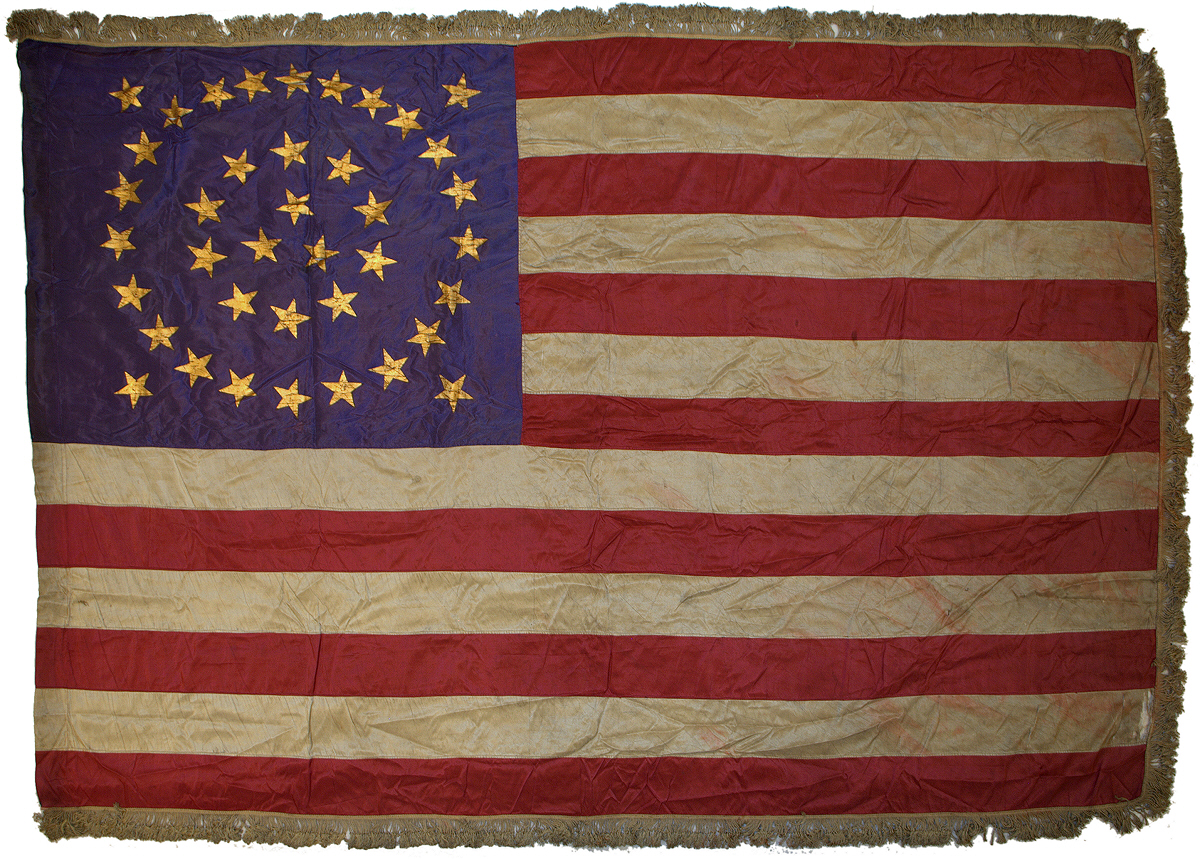
American military
battle flags of the 19th century represent some of the
most beautiful forms of the American Flag. Flags
such as this magnificent example, made of silk fabric
with gilt painted stars and fringe borders, represent
the highest quality in 19th century flag manufacturing.
Typically produced under contract to the federal
government, flags of various sizes were carried by
military units in the field and in parades and
ceremonies. There
are several traits belonging to this particular flag
that make it an especially rare form of the type.
Foremost is the star count of the flag.
Thirty-nine star flags are considered unofficial,
because the 39th state, North Dakota, was introduced to
the union at the same time as the 40th state, South
Dakota. Thus we immediately transitioned from 38
states to 40 states. During the 1875 period, prior
to the introduction of Colorado, rumors of introducing
another territory in addition to Colorado also prompted
flag makers to produce 39 star flags, as they expected
the total to change from 37 to 39. This did not
happen, and we went from 37, which lasted for nearly 10
years, to 38, which lasted another 13 years. When
considering this flag, it's uncertain whether or not the
flag dates to circa 1875 or circa 1889. However
it's my personal belief that it dates to circa 1875
primarily because of the interesting trait of having
three center stars. Just as in the silk-and-gilt
battle flag
IAS-00151, where the manufacturer added 4 gilt stars
to the center of the flag, bringing the total from 38 to
42, the maker of this flag most likely changed the
design just slightly, from a traditional
single-center-star medallion of 37 stars (circa
1867-1877) to this triple-star centered medallion.
Though there may be others, this is the only medallion
pattern flag that I've ever seen with three center
stars, making it most likely unique. The outer wreath of
22 stars surrounds 13 inner stars (10 in the small
wreath and three in the center). The flag is in
wonderful condition for a flag of the period, and its
canton color is a distinct and visually striking
purplish hue. While printed parade flags in the
count of 39 stars are somewhat common, pieced-and-sewn
flags in the 39 count are rare in the extreme, with just
a handful known, and of those, examples with star
patterns other than lineal rows most likely number fewer
than five. Consequently, this is one of the rarest
and most beautiful known flags in this particular star
count. |

